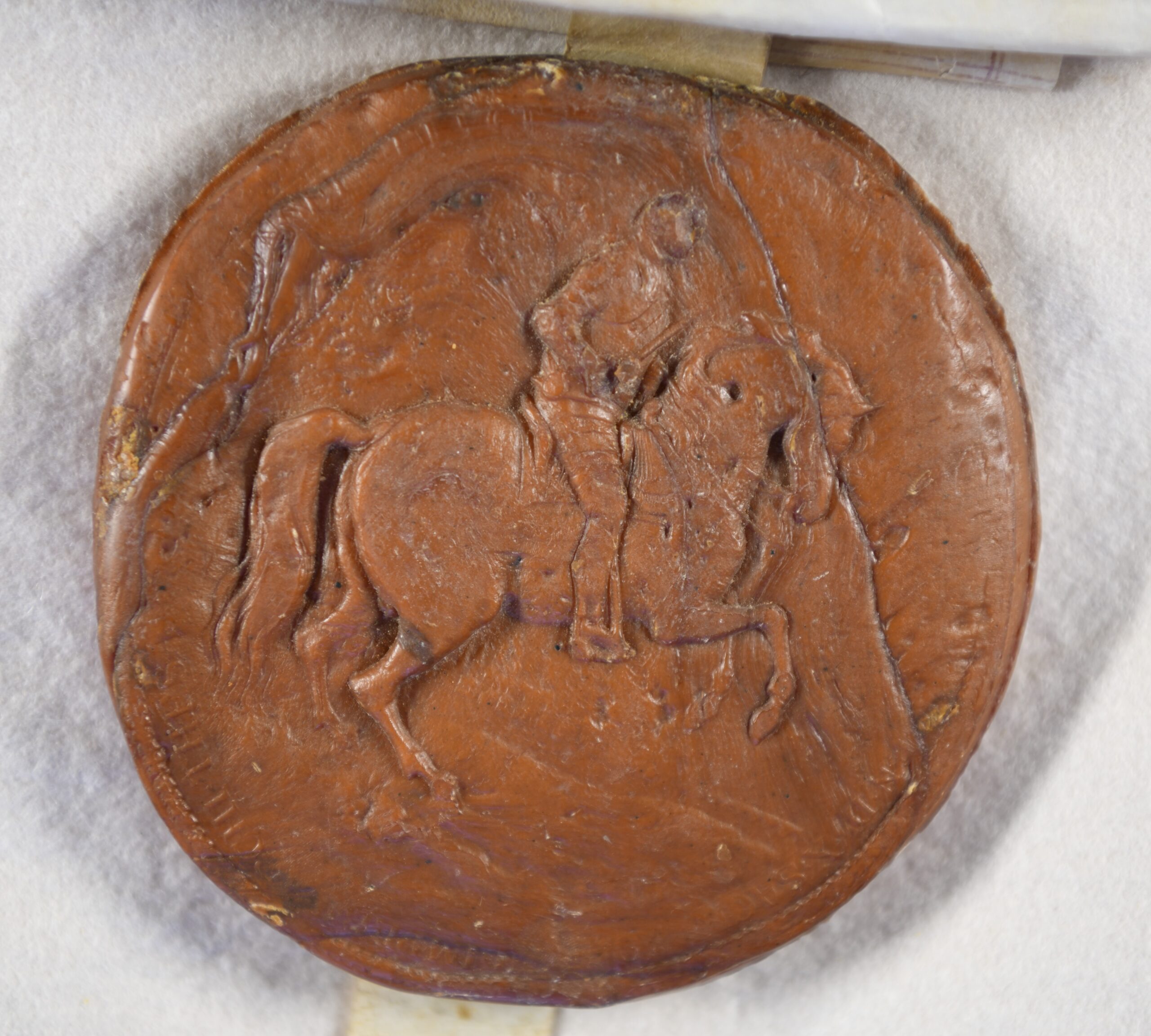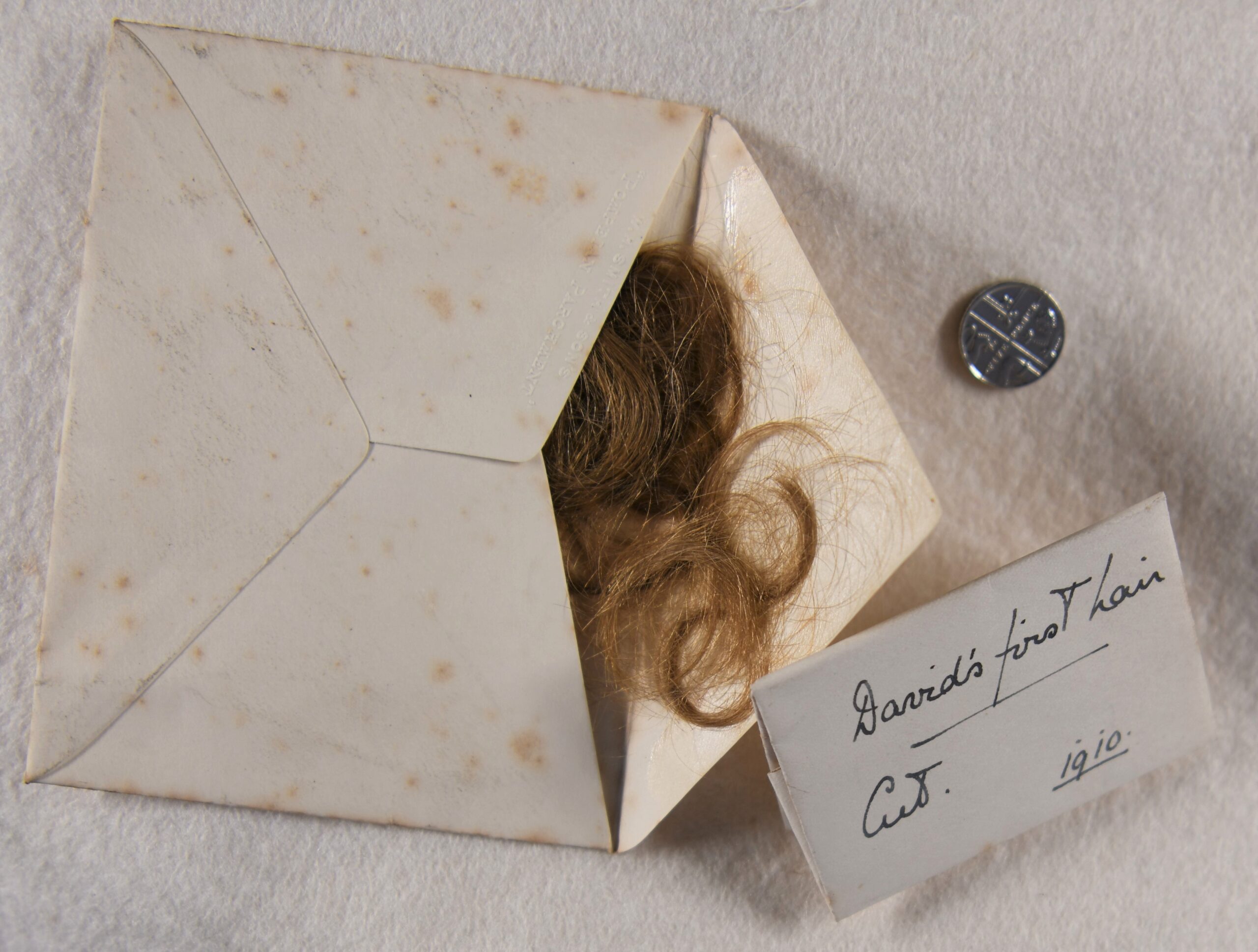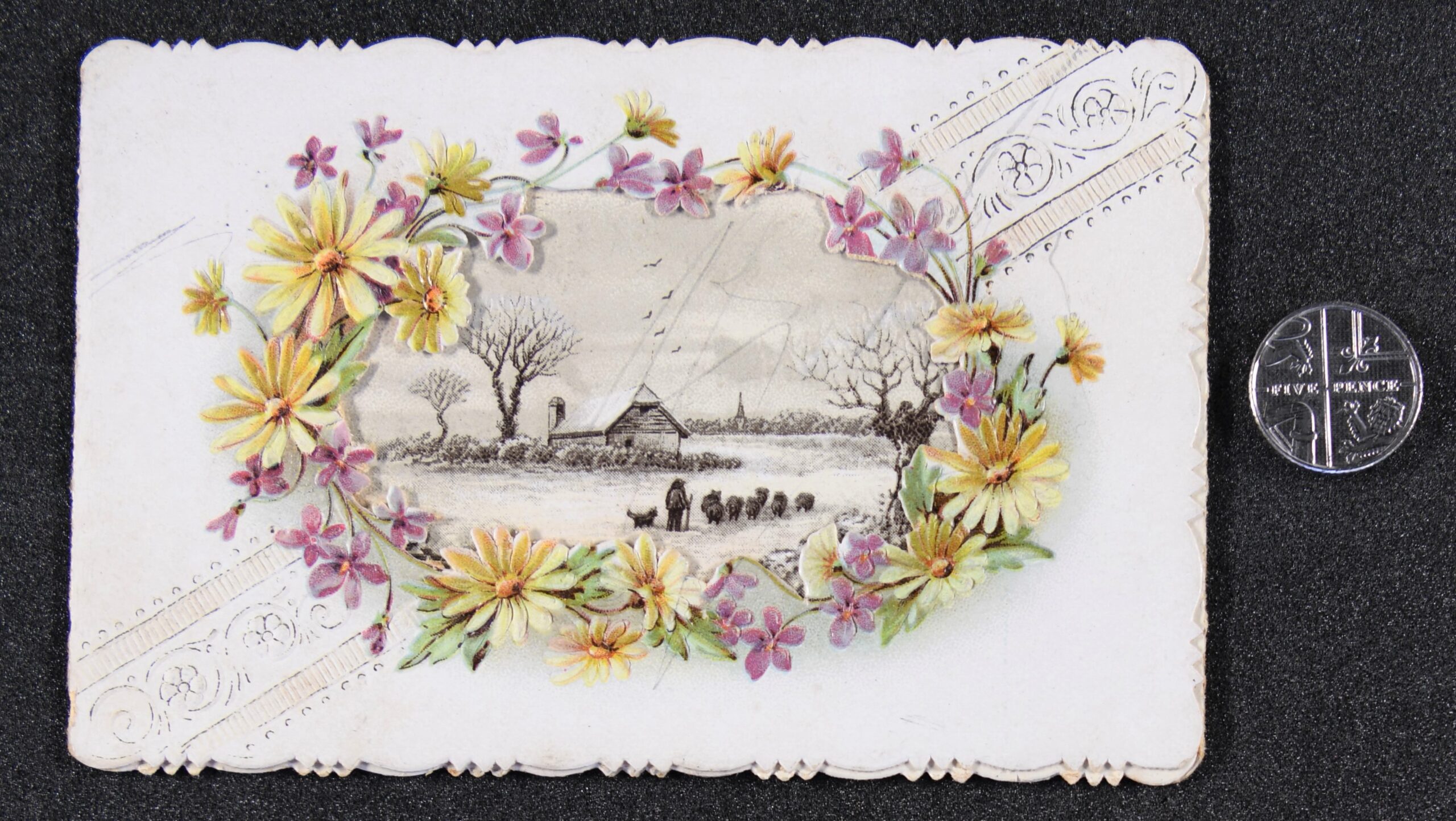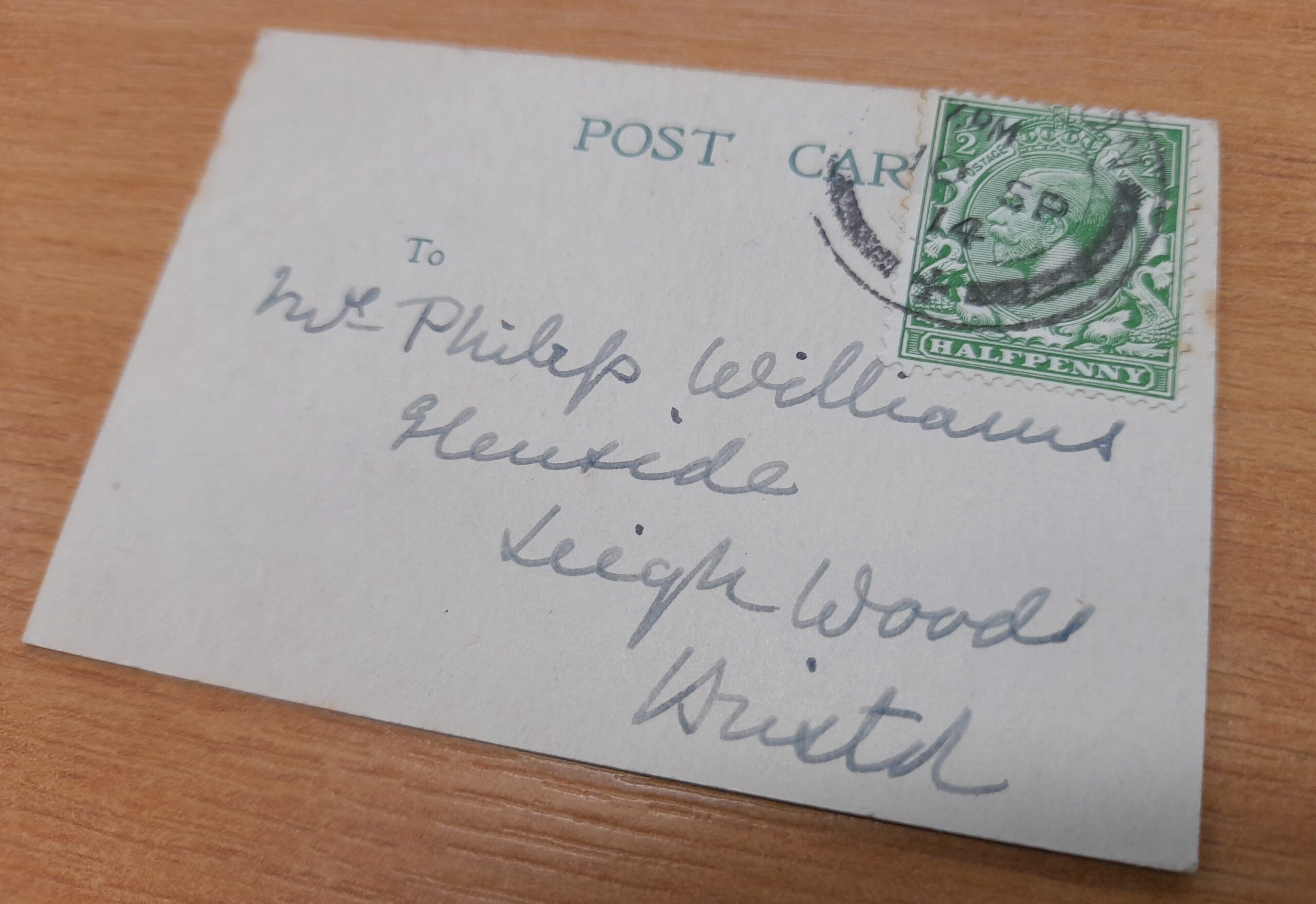If you’ve been following our blogs for the last few months, you might remember that we recently discovered a tiny almanac belonging to Thomas Strangways, so small it can fit in the palm of your hand. Inspired by this adorable find, we decided to see what other miniature things could be found in Dorset History Centre’s collection. Here are just a few of the things we discovered…
—
Within the Crichel Estate Archive are two framed miniature portraits in watercolour, dating from the early twentieth century. Both are highly detailed, and one can only imagine the skill required to produce such fine detail on such a small scale! Miniature portraits like these were (for obvious reasons) very personal items designed to be viewed up-close, and as such they were often presented as tokens of love, friendship, and loyalty.
The second of these two portraits is of Sir Victor Seymour Corkran. It is set into an oval frame and housed in a travel case. It’s easy to imagine that Sir Victor might have presented it to his wife, so that she could keep it with her wherever she went.
These two portraits are relatively modern examples of miniature portraits. As an art form, miniature portraits flourished in Britain from the early sixteenth century. The National Portrait Gallery explains that in the early days, such portraits were often painted on playing cards or vellum in opaque colour, but by the eighteenth century, with the introduction of ivory, they were painted in transparent watercolour.
We have an example of a miniature portrait painted on ivory in our collection as well. We’re not sure when it was created, or who it is portrait of, but it is a lovely (and very tiny) example of such a portrait nonetheless!
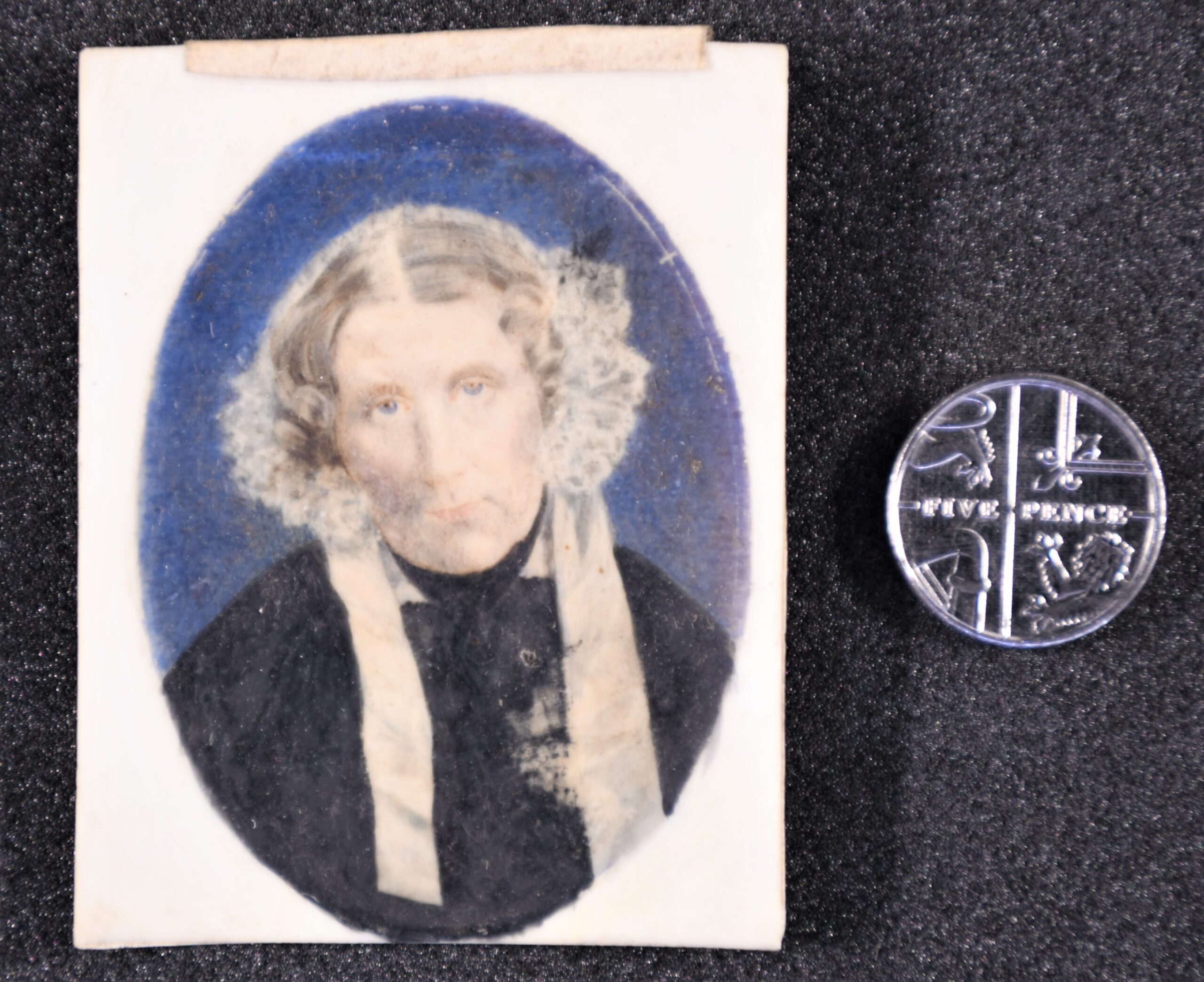
—
Continuing with the theme of personal, but perhaps slightly less lovely, items, we came across some tiny teeth (yes, teeth!), when searching through an uncatalogued box of letters and other items relating to the Williams Family of Bridehead (D-WIB Acc. 3330). Not that sort of thing you might expect to find in an archive! They are baby teeth that appear to have been kept as keepsakes along with small locks of children’s hair, including one labelled “David’s first hair cut 1910”.
The D-WIB box also contained a beautifully illustrated small Christmas card, which we couldn’t not show here, as well as a tiny postcard, only about eight times larger than the stamp used to post it.
—
Back in the Crichel Estate Archive we found another keepsake (D-CRI/H/1/1/4), this time small in content rather than size! It is a letter written in the early twentieth century that simply reads “Dear Mummy, I do feel so happy, best love from Napier”.
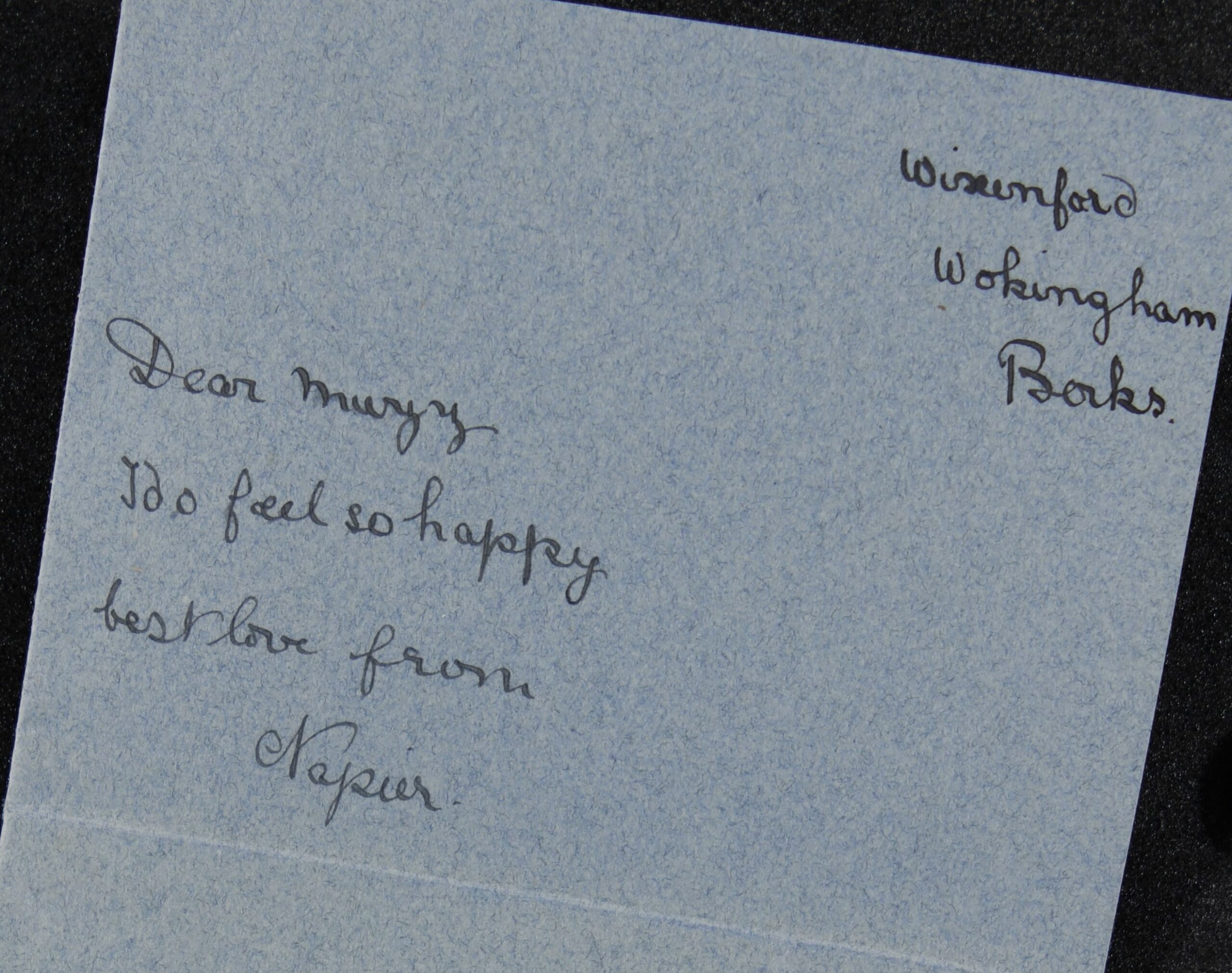
It’s not just letters small in content that we have. Within the Bankes Archive is a letter from Princess Sophia to Sir Wathen-Waller, written c. 1820, expressing gratitude for his friendship to her family (D-BKL/H/L/28). The writing and signature are absolutely miniscule!
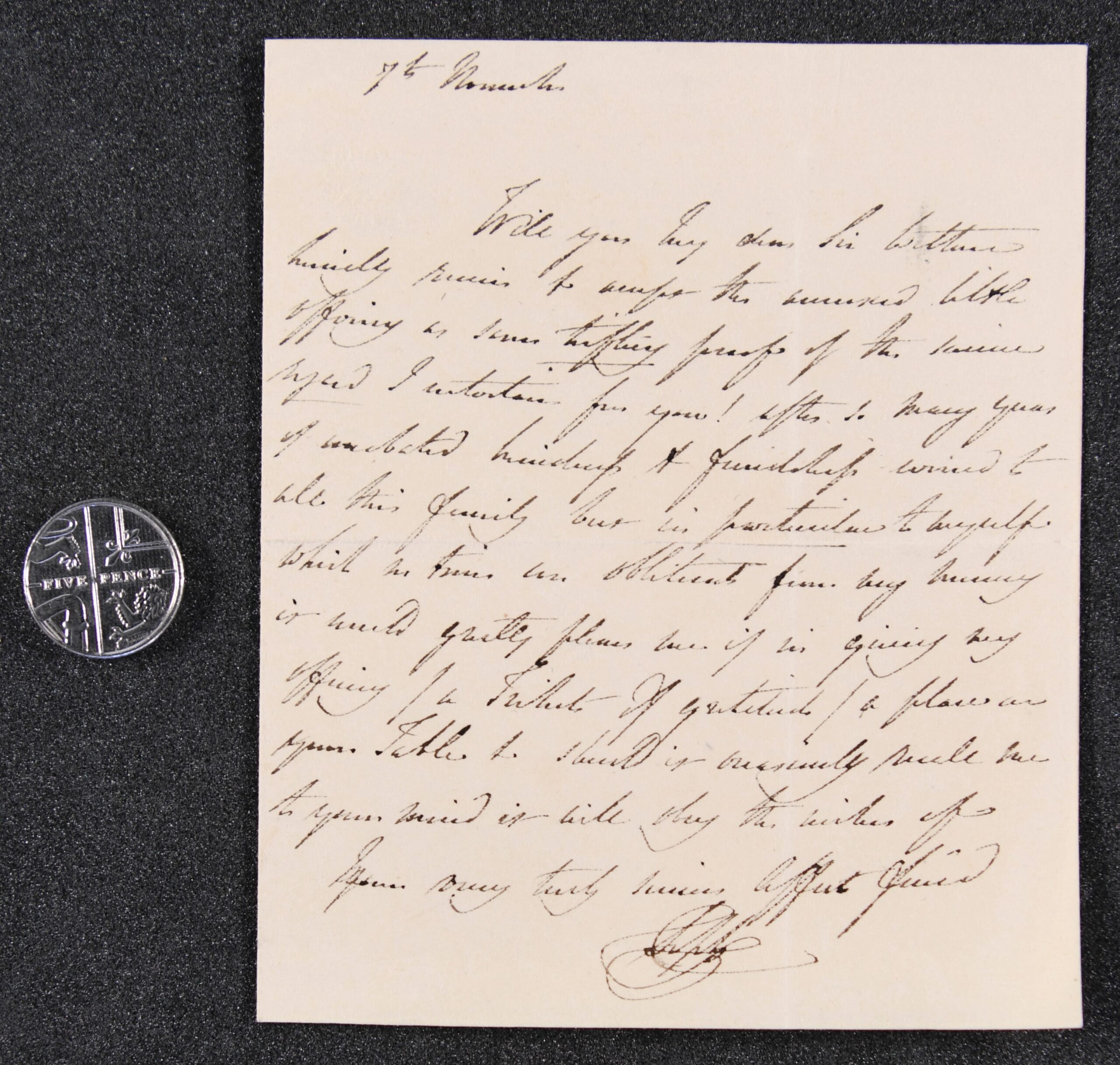
—
Something else that would have required miniscule writing is a nineteenth century notepad found in the Rackett Family of Spettisbury Archive (D-RAC/H/144). Bound in leather, it measures just 5.5 cm by 3.5 cm, and has a tiny pencil attached to the side. Somehow, someone has managed to write shopping lists and even sketch rough drawings inside it. We found it difficult to even hold the pencil, let alone use it!
—
Ironically, while looking for all these tiny items, we came across a huge seal, attached to a dispensation to allow George Pickard to hold the rectory of Warmwell with Poxwell as well as that of Bloxworth which he already holds with inspeximus (D-BLX/F/34). It measures about 16 cm in diameter (or about 8 pennies!) and is very thick. Much of the detail has worn away, but it is still possible to see the magnificent knight on horseback in the centre of the seal.
